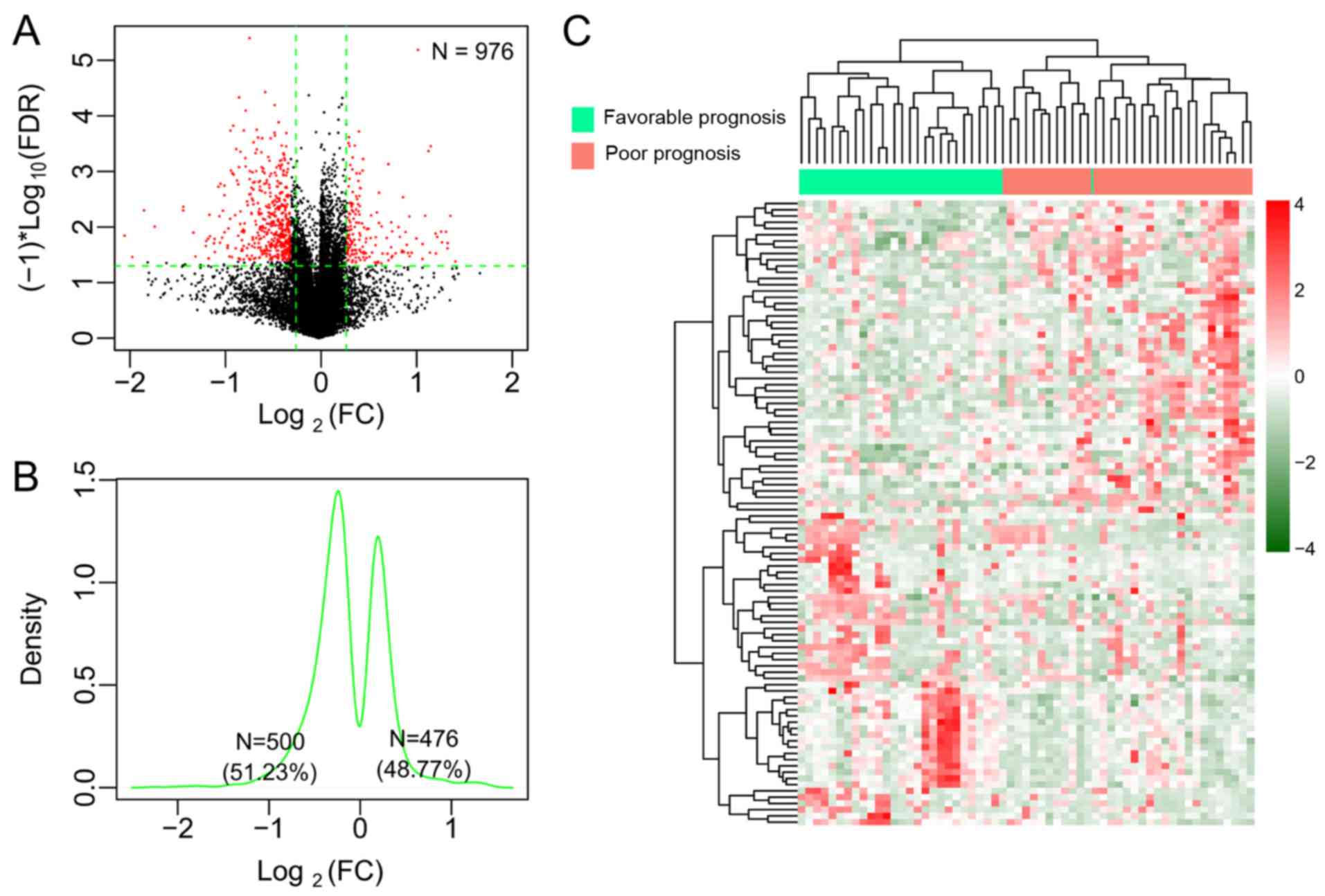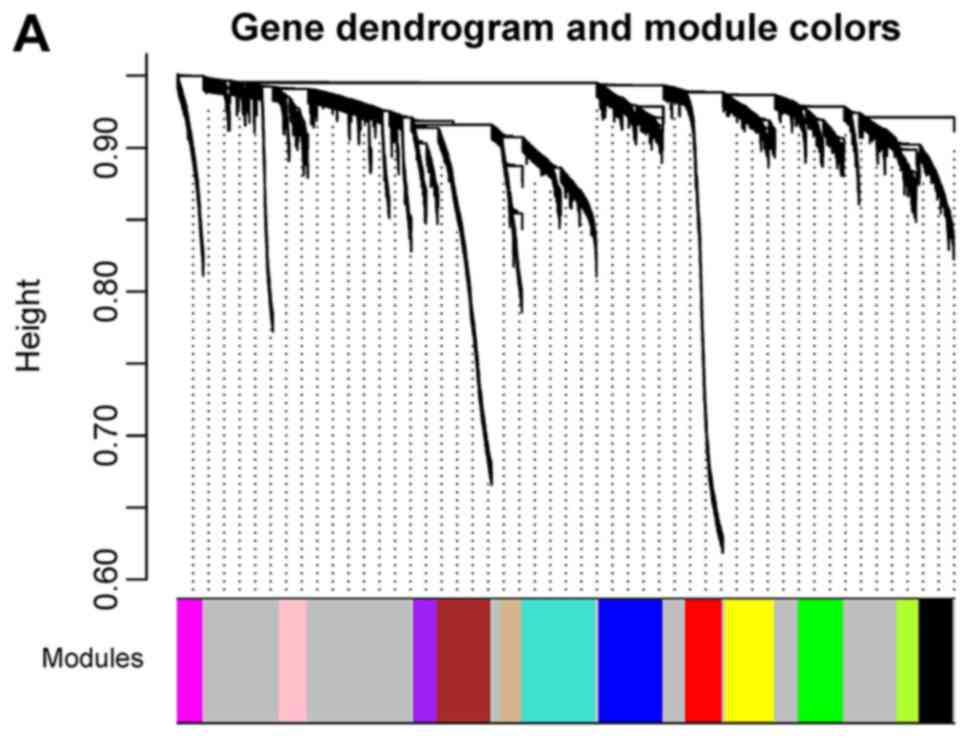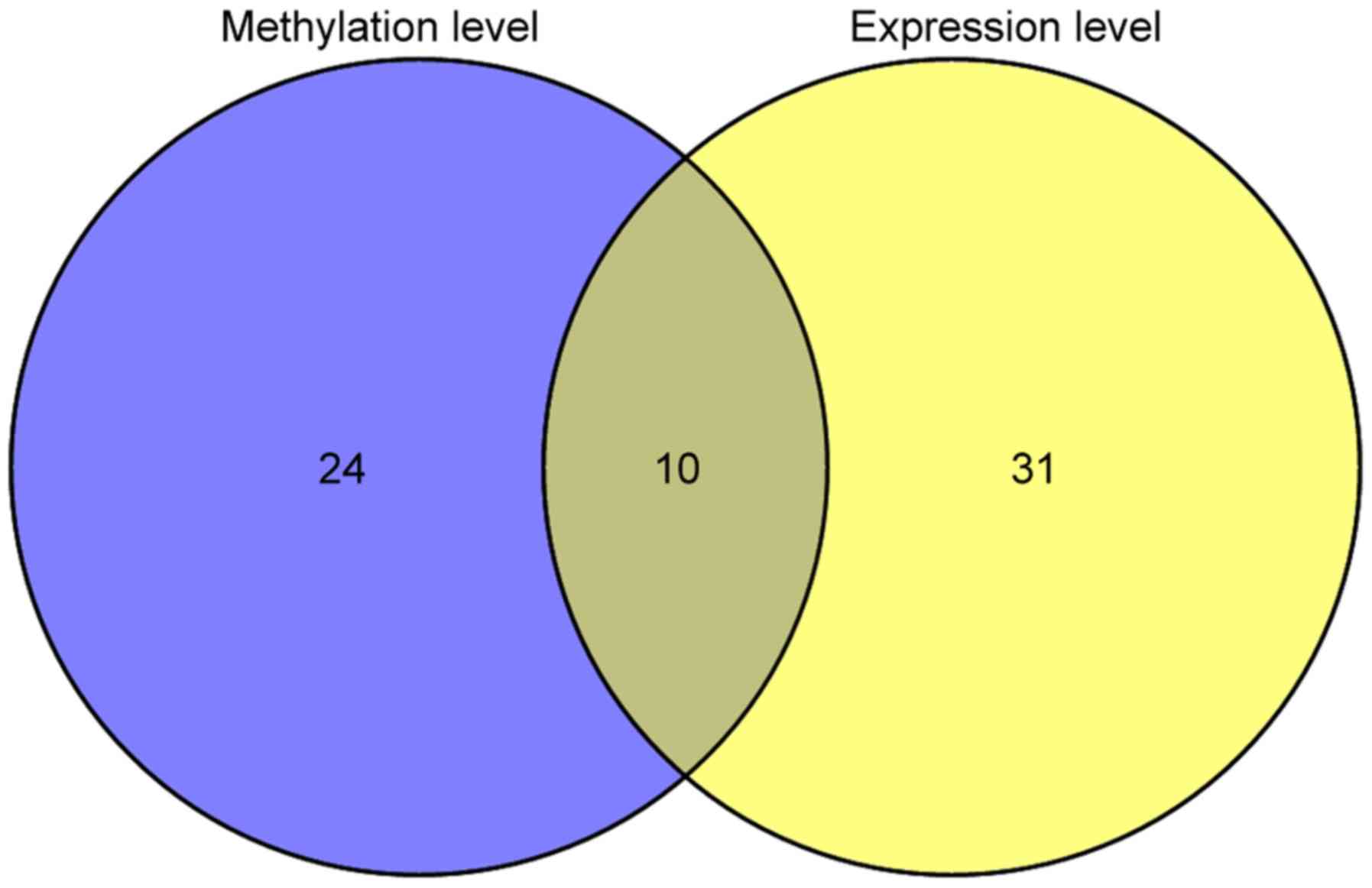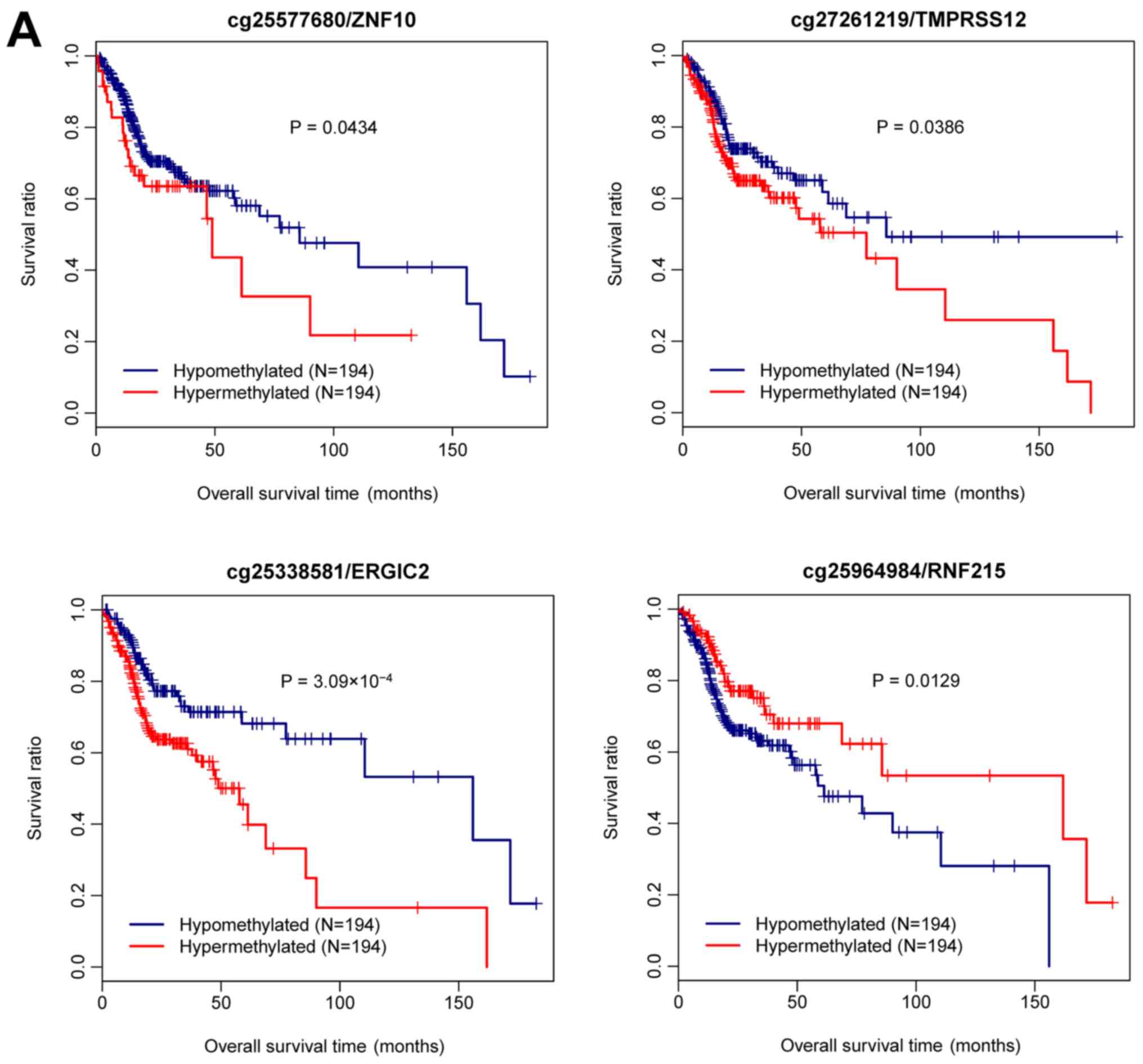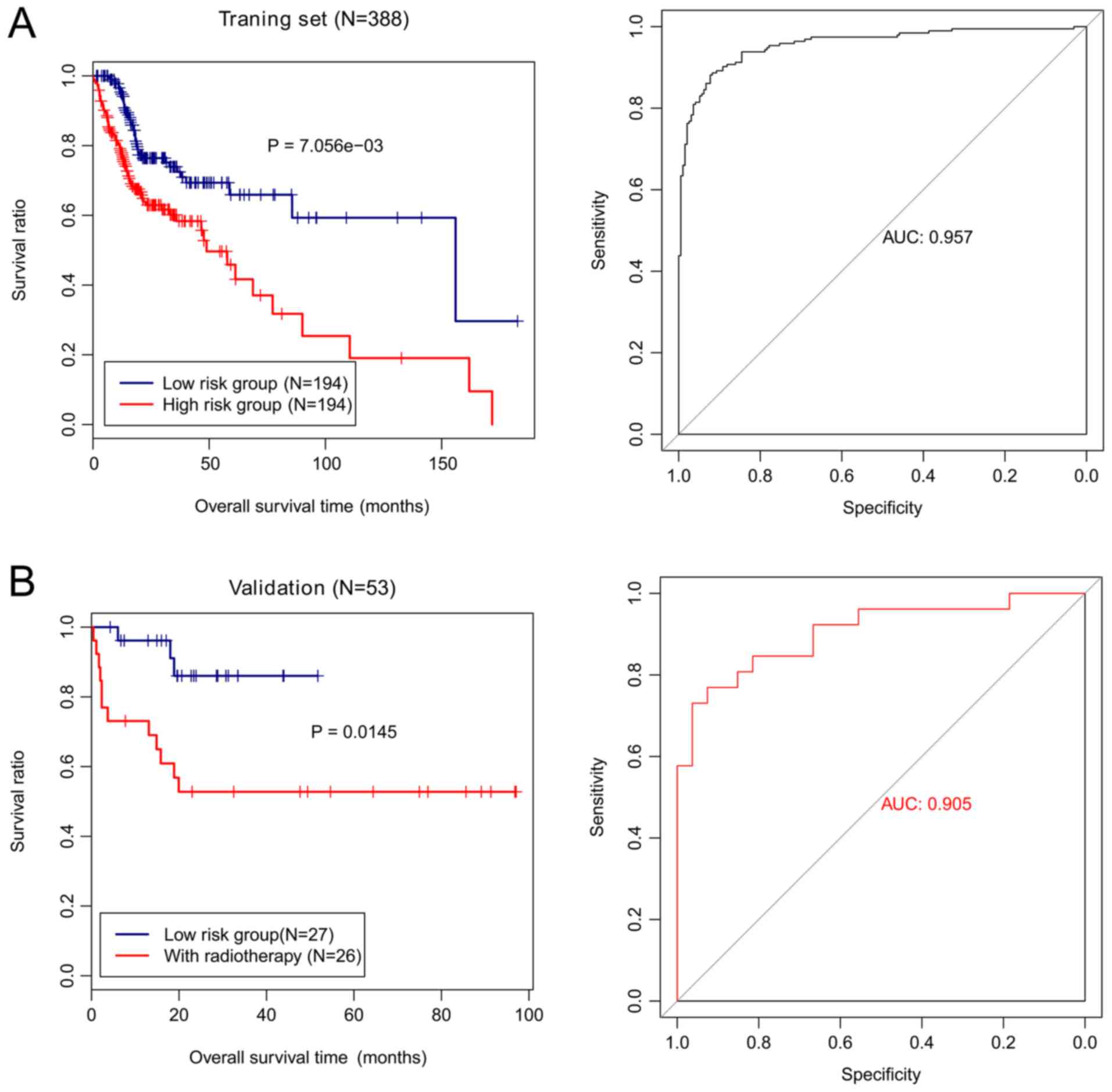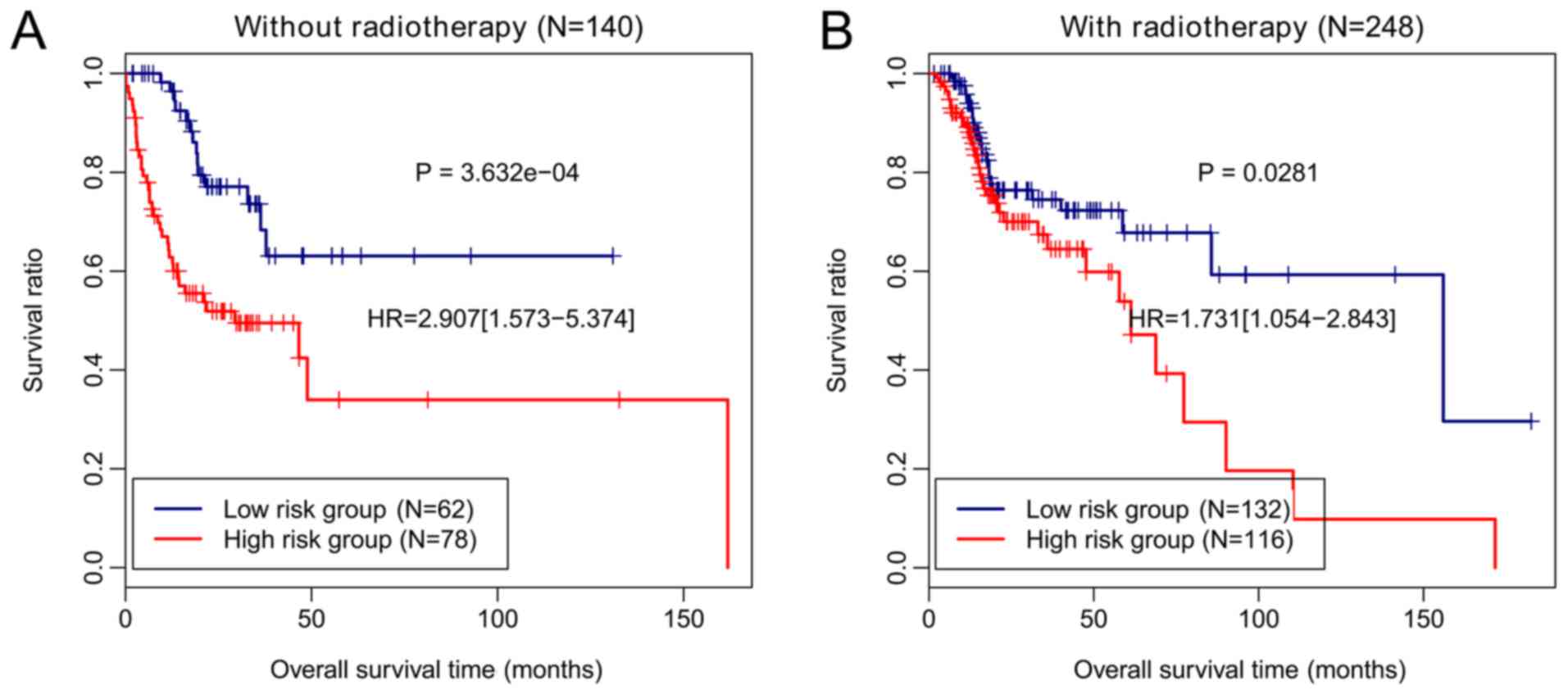|
1
|
GBD 2015 Disease, Injury Incidence and
Prevalence Collaborators: Global, regional, and national incidence,
prevalence, and years lived with disability for 310 diseases and
injuries, 1990–2015: A systematic analysis for the Global Burden of
Disease Study 2015. Lancet. 388:1545–1602. 2016. View Article : Google Scholar : PubMed/NCBI
|
|
2
|
Leemans CR, Snijders PJF and Brakenhoff
RH: The molecular landscape of head and neck cancer. Nat Rev
Cancer. 18:269–282. 2018. View Article : Google Scholar : PubMed/NCBI
|
|
3
|
López-Verdín S, Lavalle-Carrasco J,
Carreón-Burciaga RG, Serafín-Higuera N, Molina-Frechero N,
González-González R and Bologna-Molina R: Molecular markers of
anticancer drug resistance in head and neck squamous cell
carcinoma: A literature review. Cancers (Basel). 10:E3762018.
View Article : Google Scholar : PubMed/NCBI
|
|
4
|
Beyzadeoglu M, Selek U and Ozyigit G:
Radiation Therapy for Head and Neck Cancers: A Case-Based Review.
Springer; New York, NY: pp. pp2442014
|
|
5
|
Delpu Y, Cordelier P, Cho WC and Torrisani
J: DNA methylation and cancer diagnosis. Int J Mol Sci.
14:15029–15058. 2013. View Article : Google Scholar : PubMed/NCBI
|
|
6
|
Klutstein M, Nejman D, Greenfield R and
Cedar H: DNA methylation in cancer and aging. Cancer Res.
76:3446–3450. 2016. View Article : Google Scholar : PubMed/NCBI
|
|
7
|
Lechner M, Fenton T, West J, Wilson G,
Feber A, Henderson S, Thirlwell C, Dibra HK, Jay A, Butcher L, et
al: Identification and functional validation of HPV-mediated
hypermethylation in head and neck squamous cell carcinoma. Genome
Med. 5:152013. View
Article : Google Scholar : PubMed/NCBI
|
|
8
|
Steinmann K, Sandner A, Schagdarsurengin U
and Dammann RH: Frequent promoter hypermethylation of tumor-related
genes in head and neck squamous cell carcinoma. Oncol Rep.
22:1519–1526. 2009.PubMed/NCBI
|
|
9
|
Kostareli E, Hielscher T, Zucknick M,
Baboci L, Wichmann G, Holzinger D, Mücke O, Pawlita M, Del Mistro
A, Boscolo-Rizzo P, et al: Gene promoter methylation signature
predicts survival of head and neck squamous cell carcinoma
patients. Epigenetics. 11:61–73. 2016. View Article : Google Scholar : PubMed/NCBI
|
|
10
|
Kostareli E, Holzinger D, Bogatyrova O,
Hielscher T, Wichmann G, Keck M, Lahrmann B, Grabe N,
Flechtenmacher C, Schmidt CR, et al: HPV-related methylation
signature predicts survival in oropharyngeal squamous cell
carcinomas. J Clin Invest. 123:2488–2501. 2013. View Article : Google Scholar : PubMed/NCBI
|
|
11
|
Esposti DD, Sklias A, Lima SC, Beghelli-de
la Forest Divonne S, Cahais V, Fernandez-Jimenez N, Cros MP, Ecsedi
S, Cuenin C, Bouaoun L, et al: Unique DNA methylation signature in
HPV-positive head and neck squamous cell carcinomas. Genome Med.
9:332017. View Article : Google Scholar : PubMed/NCBI
|
|
12
|
Shuryak I, Hall EJ and Brenner DJ: Dose
dependence of accelerated repopulation in head and neck cancer:
Supporting evidence and clinical implications. Radiother Oncol.
127:20–26. 2018. View Article : Google Scholar : PubMed/NCBI
|
|
13
|
Zhu X, Wang Y, Tan L and Fu X: The pivotal
role of DNA methylation in the radio-sensitivity of tumor
radiotherapy. Cancer Med. 7:3812–3819. 2018. View Article : Google Scholar : PubMed/NCBI
|
|
14
|
Huang KH, Huang SF, Chen IH, Liao CT, Wang
HM and Hsieh LL: Methylation of RASSF1A, RASSF2A, and HIN-1 is
associated with poor outcome after radiotherapy, but not surgery,
in oral squamous cell carcinoma. Clin Cancer Res. 15:4174–4180.
2009. View Article : Google Scholar : PubMed/NCBI
|
|
15
|
Krishnan NM, Dhas K, Nair J, Palve V,
Bagwan J, Siddappa G, Suresh A, Kekatpure VD, Kuriakose MA and
Panda B: A minimal DNA methylation signature in oral tongue
squamous cell carcinoma links altered methylation with tumor
attributes. Mol Cancer Res. 14:805–819. 2016. View Article : Google Scholar : PubMed/NCBI
|
|
16
|
Ritchie ME, Phipson B, Wu D, Hu Y, Law CW,
Shi W and Smyth GK: Limma powers differential expression analyses
for RNA-sequencing and microarray studies. Nucleic Acids Res.
43:e472015. View Article : Google Scholar : PubMed/NCBI
|
|
17
|
Langfelder P and Horvath S: WGCNA: An R
package for weighted correlation network analysis. BMC
Bioinformatics. 9:5592008. View Article : Google Scholar : PubMed/NCBI
|
|
18
|
Massart R, Dymov S, Millecamps M, Suderman
M, Gregoire S, Koenigs K, Alvarado S, Tajerian M, Stone LS and Szyf
M: Overlapping signatures of chronic pain in the DNA methylation
landscape of prefrontal cortex and peripheral T cells. Sci Rep.
6:196152016. View Article : Google Scholar : PubMed/NCBI
|
|
19
|
Cao J and Zhang S: A bayesian extension of
the hypergeometric test for functional enrichment analysis.
Biometrics. 70:84–94. 2014. View Article : Google Scholar : PubMed/NCBI
|
|
20
|
Gene Ontology Consortium: Gene ontology
consortium: Going forward. Nucleic Acids Res. 43:D1049–D1056. 2015.
View Article : Google Scholar : PubMed/NCBI
|
|
21
|
Huang DW, Sherman BT, Tan Q, Kir J, Liu D,
Bryant D, Guo Y, Stephens R, Baseler MW, Lane HC and Lempicki RA:
DAVID Bioinformatics Resources: Expanded annotation database and
novel algorithms to better extract biology from large gene lists.
Nucleic Acids Res. 35:W169–W175. 2007. View Article : Google Scholar : PubMed/NCBI
|
|
22
|
Tibshirani R: The lasso method for
variable selection in the Cox model. Stat Med. 16:385–395. 1997.
View Article : Google Scholar : PubMed/NCBI
|
|
23
|
Goel MK, Khanna P and Kishore J:
Understanding survival analysis: Kaplan-Meier estimate. Int J
Ayurveda Res. 1:274–278. 2010. View Article : Google Scholar : PubMed/NCBI
|
|
24
|
Marur S and Forastiere AA: Head and neck
squamous cell carcinoma: Update on epidemiology, diagnosis, and
treatment. Mayo Clin Proc. 91:386–396. 2016. View Article : Google Scholar : PubMed/NCBI
|
|
25
|
Marur S and Forastiere AA: Head and neck
cancer: Changing epidemiology, diagnosis, and treatment. Mayo Clin
Proc. 83:489–501. 2008. View Article : Google Scholar : PubMed/NCBI
|
|
26
|
Bøvelstad HM, Nygård S, Størvold HL,
Aldrin M, Borgan Ø, Frigessi A and Lingjaerde OC: Predicting
survival from microarray data-a comparative study. Bioinformatics.
23:2080–2087. 2007. View Article : Google Scholar : PubMed/NCBI
|
|
27
|
Goeman JJ: L1 penalized estimation in the
Cox proportional hazards model. Biom J. 52:70–84. 2010.PubMed/NCBI
|
|
28
|
Jen J and Wang YC: Zinc finger proteins in
cancer progression. J Biom Sci. 23:532016. View Article : Google Scholar
|
|
29
|
Chung CH, Dignam JJ, Hammond ME, Klimowicz
AC, Petrillo SK, Magliocco A, Jordan R, Trotti A, Spencer S, Cooper
JS, et al: Glioma-associated oncogene family zinc finger 1
expression and metastasis in patients with head and neck squamous
cell carcinoma treated with radiation therapy (RTOG 9003). J Clin
Oncol. 29:1326–1334. 2011. View Article : Google Scholar : PubMed/NCBI
|
|
30
|
Hedstrom L: Serine protease mechanism and
specificity. Chem Rev. 34:4501–4524. 2003.
|
|
31
|
Liu M, Hu Z, Qi L, Wang J, Zhou T, Guo Y,
Zeng Y, Zheng B, Wu Y, Zhang P, et al: Scanning of novel
cancer/testis proteins by human testis proteomic analysis.
Proteomics. 13:1200–1210. 2013. View Article : Google Scholar : PubMed/NCBI
|
|
32
|
Saghafinia S, Mina M, Riggi N, Hanahan D
and Ciriello G: Pan-cancer landscape of aberrant DNA methylation
across human tumors. Cell Rep. 25:1066–1080.e8. 2018. View Article : Google Scholar : PubMed/NCBI
|
|
33
|
Kwok SC, Liu X, Mangel P and Daskal I:
PTX1(ERGIC2)-VP22 fusion protein upregulates interferon-beta in
prostate cancer cell line PC-3. DNA Cell Biol. 25:523–529. 2006.
View Article : Google Scholar : PubMed/NCBI
|
|
34
|
Kwok SC, Kumar S and Dai G:
Characterization of a variant of ERGIC2 transcript. DNA Cell Biol.
33:73–78. 2014. View Article : Google Scholar : PubMed/NCBI
|
|
35
|
Takenobu M, Osaki M, Fujiwara K, Fukuhara
T, Kitano H, Kugoh H and Okada F: PITX1 is a novel predictor of the
response to chemotherapy in head and neck squamous cell carcinoma.
Mol Clin Oncol. 5:89–94. 2016. View Article : Google Scholar : PubMed/NCBI
|
|
36
|
Chu P, Pardo J, Zhao H, Li CC, Pali E,
Shen MM, Qu K, Yu SX, Huang BC, Yu P, et al: Systematic
identification of regulatory proteins critical for T-cell
activation. J Biol. 2:212003. View Article : Google Scholar : PubMed/NCBI
|
|
37
|
Fang S, Lorick KL, Jensen JP and Weissman
AM: RING finger ubiquitin protein ligases: Implications for
tumorigenesis, metastasis and for molecular targets in cancer.
Semin Cancer Biol. 13:5–14. 2003. View Article : Google Scholar : PubMed/NCBI
|
|
38
|
Yang L, Zhou B, Li X, Lu Z, Li W, Huo X
and Miao Z: RNF125 is a ubiquitin-protein ligase that promotes p53
degradation. Cell Physiol Biochem. 35:237–245. 2015. View Article : Google Scholar : PubMed/NCBI
|
|
39
|
Khan AQ, Siveen KS, Prabhu KS,
Kuttikrishnan S, Akhtar S, Shaar A, Raza A, Mraiche F, Dermime S
and Uddin S: Curcumin-mediated degradation of s-phase kinase
protein 2 induces cytotoxic effects in human
papillomavirus-positive and negative squamous carcinoma cells.
Front Onco. 8:3992018. View Article : Google Scholar
|



